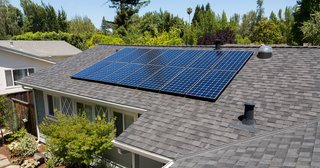As energy costs rise and environmental concerns grow, many owners and businesses are embracing solar energy as a sustainable and cost-effective solution. Installing solar power systems not only reduces energy bills but also minimizes carbon footprints. This guide walks you through the roof, letting you make a knowledgeable decision.

Step 1: Assessing Solar Potential
Before installing solar panels, it is very important evaluate your web site's solar potential. Factors to consider include:
Roof Orientation and Tilt: South-facing roofs with a tilt between 15-40 degrees capture maximum sunlight.
Shading: Avoid areas with excessive shading from trees or nearby buildings.
Local Climate: Sunlight exposure varies by region; check solar irradiance maps for guidance.
Step 2: Choosing the Right Solar Panels
There vary types of solar panels, each with unique characteristics:
Monocrystalline Panels: High efficiency and longevity but higher priced.
Polycrystalline Panels: Cost-effective with slightly lower efficiency.
Thin-Film Panels: Lightweight and flexible but less efficient.
Step 3: Selecting an Inverter
Inverters convert solar energy into usable electricity. Common types include:
String Inverters: Affordable but less efficient for shaded areas.
Microinverters: Installed on each panel, providing higher efficiency and performance in shaded conditions.
Hybrid Inverters: Combine battery storage with grid connectivity for optimum flexibility.
Step 4: Obtaining Permits and Incentives
Most local governments require permits for solar installations. Additionally, search for government incentives, tax credits, or rebates that will lower the price tag on your system.
Step 5: Installation Process
Mounting the Panels: Secure the racking system on the roof.
Wiring the System: Connect the panels towards the inverter and electrical system.
Connecting for the Grid: A certified electrician must connect the system on the main electrical panel.
Inspection and Approval: Authorities inspect cellular phone before activation.
Step 6: Maintenance and Monitoring
To ensure optimal performance, regular maintenance is essential:
Cleaning: Remove dirt and debris to keep efficiency.
Checking for Damage: Inspect panels and wiring periodically.
Monitoring System Performance: Use solar monitoring apps to trace energy production.
Solar panel installation is a great investment for the greener plus much more energy-independent future. By carefully assessing your internet site, choosing the right components, and ensuring proper installation, you can maximize the benefits of solar technology. Whether for residential or commercial use, going solar is often a step towards sustainability and long-term savings.
